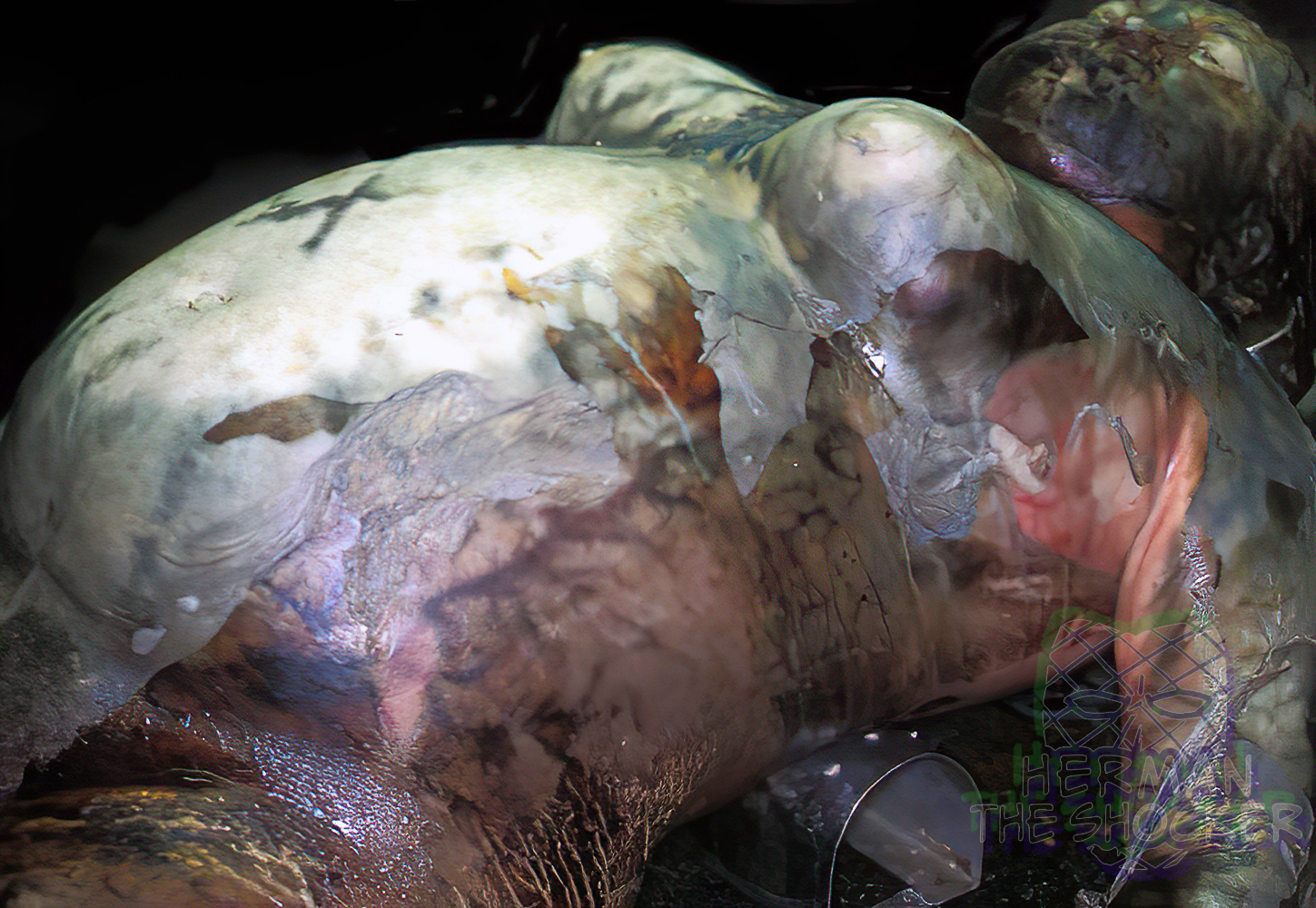This is the body of a 74-year-old woman who died while taking a hot bath, she was found 3 days later. The body is bloated and venous marbling can be seen. No further info.
Decomposition, or putrefaction, is a combination of two processes: autolysis and bacterial action. Autolysis is the breakdown of cells and organs through an aseptic chemical process caused by intracellular enzymes. Because it is a chemical process, it is accelerated by heat, slowed by cold, and stopped by freezing. Bacterial action results in the conversion of soft tissues in the body to liquids and gases. The chemicals produced as a result of putrefaction are cadaverine and putrescine, hydrogen sulfide and other sulfides, which generate a horrible smell.
Putrefaction begins immediately upon death and usually becomes noticeable within 24 hours. As soon as death occurs, the bacteria or microorganisms within the intestinal tract escape from the bowel into the other tissues of the body. As they grow, they begin to produce gases and other properties that distort and discolor the tissues of the body.
The discoloration is a dark greenish combination of colors and is generally pronounced within 36 hours. As a result, the body begins to swell from the putrefactive gases, emitting an extremely repugnant odor.
Marbling is a common finding usually found after at least 24 h since death occurred and is a red, green, and black discoloration that follows the vessels of the body due to the breakdown of hemoglobin. Marbling occurs when certain types of bacteria found in the abdomen “migrate” to the blood vessels, causing them to assume a purple-greenish tint. This effect gives the skin on some body parts — usually the trunk, legs, and arms — the appearance of marble (hence its name).
Latest posts








